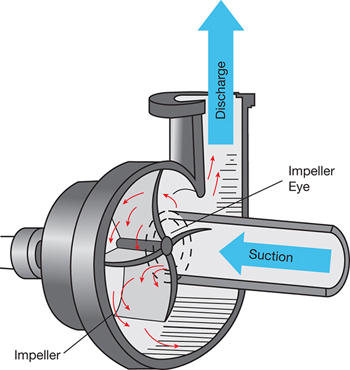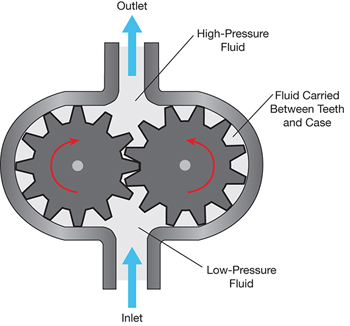Pump Sizing: Bridging the Gap Between Theory and Practice
Published on by Sean Moran, Principal Engineer in Academic
This article explains some of the core concepts behind pump sizing.
When I left university, I found that I needed additional information to turn my theoretical knowledge of fluid mechanics into the practical knowledge required to specify a pump. Judging by the questions I see asked nearly every week on LinkedIn and elsewhere, I believe this is a problem shared by many engineers early in their careers. This article gives practical insight on how to specify a pump.
Pump types
Pumps can be used to move fluids, which flow from regions of high pressure to regions of low pressure, by increasing the pressure of the fluid. Before you purchase a pump, you must specify the type of pump and make sure it is capable of delivering a given flowrate at a given pressure.
There are two main pump types: rotodynamic and positive-displacement. In a rotodynamic pump, a rotating impeller imparts energy to the fluid. The most common type of rotodynamic pump is the centrifugal pump (Figure 1). The amount of liquid that passes through the pump is inversely proportional to the pressure at the pump outlet. In other words, the outlet flowrate of a rotodynamic pump varies nonlinearly with pressure.

▲ Figure 1. In a centrifugal pump, a rotating impeller imparts energy to the liquid moving through the pump.
In a positive-displacement (PD) pump, a discrete amount of fluid is trapped, forced through the pump, and discharged. A gear pump is an example of a PD pump (Figure 2). This pumping principle produces a pulsating flow, rather than a smooth flow. Its output flow tends to vary little with respect to the pressure at the pump outlet, because the moving displacement mechanism pushes the slug of liquid out at a constant rate.

▲ Figure 2. A gear pump is a type of positive-displacement pump in which a discrete volume of fluid is trapped and then discharged.
Most process pumps are rotodynamic pumps, so you need to know the required outlet pressure to specify the pump that will provide the required flow. Alhough certain system head parameters are calculated the same way whether the driving force for flow is a pump or gravity, this article mainly addresses sizing concerns for rotodynamic pumps.
Originally posted on: AlChe
Read the full blog in the attached document
Media
Taxonomy
- Centrifugal Pumps & Pumping Systems
- Infrastructure
- Pumps
- Pump
3 Comments
-
PS - there are a lot more pump types than the two shown.
-
The vast majority of sewage pumping stations are simple submersibles with just two pumps. Complex calculations are therefore unnecessary as each pump has to serve as duty and the other as standby. Rather than the calculations, it is the procedure which causes the most confusion as you have to get things in the right order to avoid iterations. we used a mnemonic: "local Flygt man has pump with seals" which gives the correct order for the design of a station (location, flow, main, head, pump, well, site). The pump sizing is simply read off from the manufacturer's catalogue and requires no calculation.
-
Nice basic info regarding diff type of pumps. In rotodynamic type pumps there R Multistage pumps to achive high flowrate & discharge pressure.We at sui gas purification Plant using 6-7 stage Rotodynamic centrifugal Amine pumps for gas purification. Where RPM varies 3700-4000 and flowrates 700 Gpm to 1500 gpm at a discharge pressure of 1000 Psig.